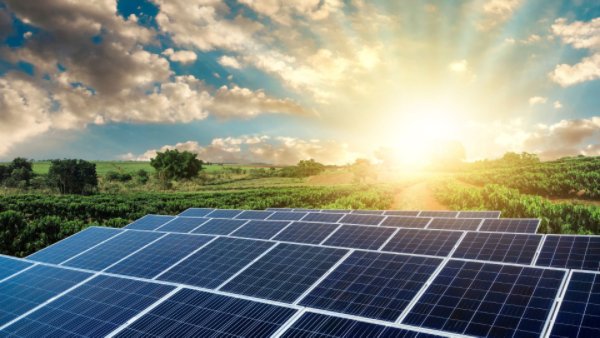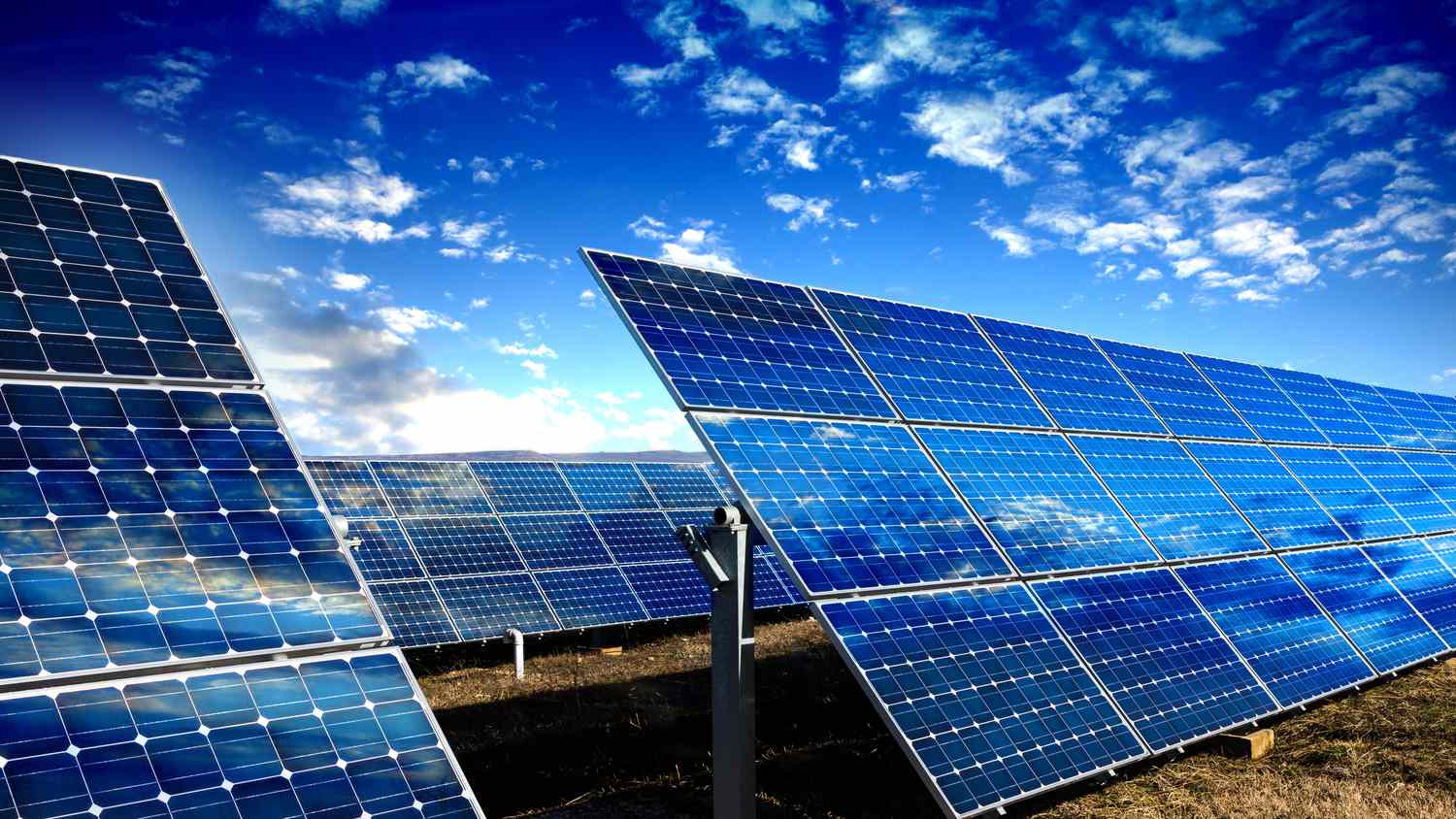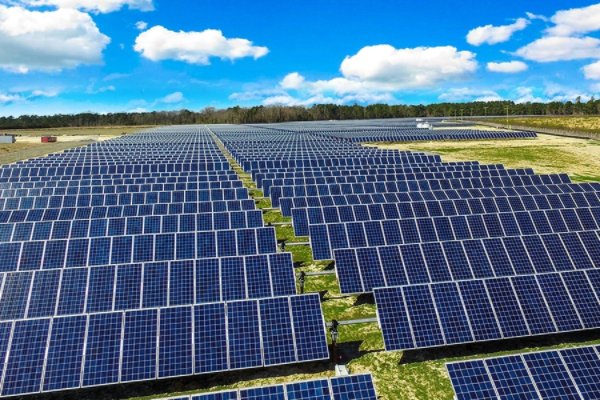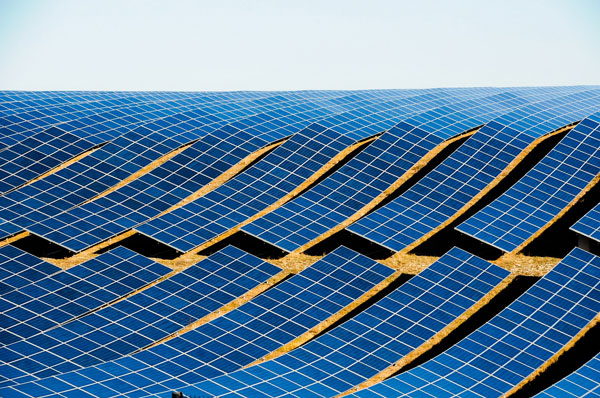Monocrystalline Solar Panels
Monocrystalline solar panels, which are widely recognized for their efficiency and lifespan, have become a preferred choice for numerous solar energy systems. Here is a detailed overview of the solar panel technology:
High Efficiency
By having a high efficiency, monocrystalline solar panels generate a higher output of electricity in a given area relative to all other types of solar panels. Such capacity ranges between 15% and 22%, making them more advantageous to utilize in compact areas, where they may often be positioned, such as on the roofs.
Uniform Appearance
One of the prominent features of monocrystalline solar panels is their uniformly even dark hue, which is exhibited across the entire panel. This is achieved due to the manufacturing process, which implies cutting silicon ingots into patterns that are slightly thicker than the razor. The ingot is then separated into a series of slices that are afterward used to form the cells in a single crystal structure, which in turn guarantees uniform appearance across the surface.
Longevity and Durability
Monocrystalline solar panels are also characterized by their longevity, with average life expectancy varying between 25 and 30 years. Such durable performance is attributed to the manufacturing technique of monocrystalline solar cells, which implies utilization of pure kinds of silicon. In turn, purity is typically associated with being more resistant to degeneration, corrosion, or weathering over time. In this regard, a high proportion of manufacturers offer extensive warranties for their panels.
Performance in Low Light Conditions
Monocrystalline panels may simultaneously generate a small proportion of electricity water heating in low-light conditions, such as cloudy weather, early mornings or late evenings. On the other hand, in such conditions, other solar panels may fail to perform at their peak level.
Installation and Maintenance
The installation process is simple. It begins with preparation: rooftop or ground mount is fitted with mounting brackets, or racks, while the panels are bolted to the brackets with the assistance of panels’ mounting frames or adjustable clamps. The final step involves the connection of wiring to link the panels to the inverter, which generates electric power for homes from DC electricity produced by the panels.
Cost Implications
Although the installation of monocrystalline solar panels is relatively cheaper, they are expensive in usage. This is due to their efficiency and lifespan, which means more electric power will be generated over time. As a result, despite the additional expenses, other types of solar panels will not be able to produce the same amount of savings, with additional expenses and lost savings meeting the cost.

Polycrystalline Solar Panels
Polycrystalline solar panels are a popular type of panels that are most cost-effective and frequently used in various applications, including solar farms, rooftops, and others. In this paper, we will explain some of the most common features and benefits of using these panels.
Efficiency and Cost
Polycrystalline solar panels tend to have worse efficiency as compared to monocrystalline ones, varying from 13% to 16%. However, the manufacturing process is easier and requires fewer materials, which makes this panel type cheaper to produce. Because of the lesser costs of manufacturing, these panels are usually cheaper for the customers as well, making them a preferred choice for those who want to save money .
Appearance and Manufacturing Process
One of the most characteristic features of polycrystalline panels is their blue-spotted look. The manufacturing process involves melting silicon and pouring it into molds which leads to a distinctive performance look and produces cut squares rather than circles with a more solid coloration . As opposed to monocrystalline solar panels, polycrystalline rust is blue because of the less-uniform structure of crystals that are an integral part of the panels and give them their shape.
Performance in High Temperatures
Polycrystalline panels are more likely to have a better performance in high temperatures than monocrystalline ones . This difference is due to their lower efficiency that implies that they make less power and produce less heat in the process of operation. As a result, these panels are more advantageous when used in hot climates, as there is less likelihood that the performance of the panels will significantly degrade over time.
Durability and Longevity
Although polycrystalline panels have a slightly shorter lifespan compared to monocrystalline panels, they are still one of the most durable solutions available on the market. Depending on the quality of installation and maintenance, the lifespan of these panels can vary from 25 to 30 or more years , and they allow for the same energy production over the years.
Installation and Maintenance
Polycrystalline solar panels are installed in the same way as the monocrystalline ones. That is, mounting racks or brackets are set on the surface of the installation, and the panels are then attached to these using bolts or clamps. In order to secure the panels, wires are added to them and later attached to inverters to convert DC electricity produced by the panels into AC electricity used by households or businesses. The maintenance of these panels is also simple and usually includes occasional cleaning of the panels to ensure that their surface is free of dust or debris, which can accumulate over time.
PERC Solar Panels
PERC solar panels, or Passivated Emitter and Rear Cell solar panels, are a major innovation in the world of photovoltaic technology. The following is an introduction to some of the major features and advantages of PERC solar panels.
Increased efficiency
There are many efficiencies affiliated with the utilization of these kinds of technologies . Some of the studies reported an energy developed efficiency of about 22.8% as related to another of 19.6 . The efficiency is enhanced through the manufacture of the panels by adding a special layer called the passivation layer to the cell’s rear surface. Concretely, the layer works by reducing the recombination of electrons, implying that more photons convert to electricity.
Improved performance in low light
Due to the effective capability of capturing and storing direct sunlight, these kinds of panels can deliver an admirable performance in low light . Notably, the passivation layer which has been applied at the rear surface of the cell can be very effective in sealing more superfluous light. As a result, more power, continuity, and reliability, as well, their performance will remain constant even when the weather is badly conditioned.
Degradation over years
Lastly, the degradation of these kinds of panels is not detectable of less than a percentage for every year. The industrial application of the PERC technology can reduce the recombination of electrons and enhance the effectiveness of electron moving strategies. At the same time, other types of solar panels face degradation at an average of 1 % of every year of use, making them more effective and outstanding in critical areas. Thus, the article would expect the difference in the level of effect to come from a combination of the utilization of the technologies.
PERC manufacturing process
The PERC manufacturing process involves three main stages. First, the silicon wafer is converted to silanization by adding patterning structures and passivation layer, which is made of either silicon nitride of aluminum oxide . Plasma-enhanced chemical vapor deposition or atomic layer deposition can be used to deposit the two processes. Several solar cells are then created by assembling them into two or more modules after which they are encapsulated.

Thin Film Solar Panels
Thin film solar panels are an alternative to traditional silicon-based solar panels. The thin film variant has advantages in orientation to use in certain conditions. The following are the basic characteristics concerning thin film solar technology.
Materials
A variety of materials are used for the creation of thin film solar panels, including semiconductor materials such as amorphous silicon a-Si, cadmium telluride CdTe and copper indium gallium selenide CIGS. These materials have differences in their specific characteristics and performance metrics, providing for varied use cases.
Flexibility and Light Weight
The biggest intrinsic distinction between thin film solar panels and silicon-based ones is that the former can be flexible and light in weight. These panels can be manufactured onto substrates with flexibility, such as plastic or aluminum foils, in addition to the option of concentrating on the second-cumulative generation . This feature permits the substrate to be installed on both concave and convex surfaces as well as to be embedded in building materials. The generation of thin films is less costly than silicone, due to the cheaper cost of materials and consumption of less energy for manufacturing.
Perceivably, thin films have a lower performance than silicone-based solar panels. In reality, as the mat of the thin film serves as a semiconducting structure, it can capture both direct and indirect light present in less targeted concentrations. Thus, the use of thin film solar panels may be broader in areas where light is frequently diffused by clouds and other impediments. Apart from diffused sunlight, the thin film can also receive radiation reflected on clouds or other sky covering objects.
Application in Integration Into the Building Material
Thin films are also chosen for integration into the building material as they are easy to integrate into BIPV, which is the use of solar batteries integrated into the building structure . They are also light in weight and foldable due to their panel design rather than being made of hard and heavy material. It is important that certain types of the materials used for the thin film are harmful to the environment and human life, such as, for example, cadmium telluride, which can allow for its use. However, the technology is being improved to make the material safe for the environment and human health.
Compare Solar Panels
Monocrystalline vs Polycrystalline:
-
Efficiency: Monocrystalline solar panels have always more efficiency, from 15% – 22% but between polycrystalline, only have from 13% – 16%.
-
Appearance: Monocrystalline is a single flat color while polycrystalline has a speckled blue because of its manufacturing process.
-
Durability: Monocrystalline and polycrystalline solar panels both come with excellent lifespans of 25 to 30 years. Monocrystalline panels can have a slight edge in overall longevity due to being made of a higher purity of silicon.
-
Performance in high temperatures: Polycrystalline solar panels typically perform better in high-temperature environments because of their lower efficiency which generates less heat during operation.
PERC vs Thin film:
-
Efficiency: PERC normally have a higher efficiency of 20% – 23%, but thin film only cover from 10% – 12%.
-
Flexibility: Thin-film solar panels are more flexible and lighter than PERC panels. This makes them perfect for curved surfaces and building-integrated applications.
-
Cost: Thin film normally have lower manufacturing cost for the company because of its simple manufacturing process.
-
Performance in low light: Thin-film solar panels generally outperform PERL panels in low-light conditions. It’s perfect for areas enhancing frequent cloud cover or shading.


